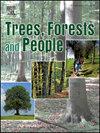Optimizing afforestation and reforestation strategies to enhance ecosystem services in critically degraded regions
IF 2.7
Q1 FORESTRY
引用次数: 0
Abstract
Human activity has caused massive forest ecosystem damage, threatening the global environmental balance. Afforestation and reforestation are crucial strategies for the restoration of forest ecosystem functions. This study was conducted on Belitung Island, Indonesia, which has experienced forest degradation due to mining activity and is currently undergoing forest restoration efforts. This study aimed to identify priority areas for afforestation and reforestation using an innovative approach that integrates multi-criteria analysis (MCA) and machine-learning techniques based on ecosystem service (ES) indicators, wildfire susceptibility, and environmental pressure. This study is the first to combine long-term remote sensing data with machine learning to develop priority scenarios for afforestation and reforestation. Results show that low-priority afforestation areas cover 24,479.66 ha (20.45 %), medium-priority areas 58,703.30 ha (49.04 %), and high-priority areas 36,521.98 ha (30.51 %). For reforestation, low-priority areas cover 23,123.45 ha (30.45 %), medium-priority areas 38,197.36 ha (50.3 %), and high-priority areas 14,618.27 ha (19.25 %). This study is expected to serve as a reference for sustainable forest ecosystem restoration efforts in various regions by leveraging ES approaches and environmental conditions using remote-sensing technology.
优化造林和再造林战略,加强严重退化地区的生态系统服务
人类活动对森林生态系统造成了巨大破坏,威胁着全球环境平衡。植树造林和重新造林是恢复森林生态系统功能的重要战略。本研究在印度尼西亚的伯利东岛进行,该岛因采矿活动导致森林退化,目前正在进行森林恢复工作。这项研究旨在根据生态系统服务 (ES) 指标、野火易发性和环境压力,采用一种创新方法,将多重标准分析 (MCA) 和机器学习技术相结合,确定造林和再造林的优先区域。该研究首次将长期遥感数据与机器学习相结合,制定了造林和再造林的优先方案。结果显示,低优先造林区面积为 24,479.66 公顷(20.45%),中优先造林区面积为 58,703.30 公顷(49.04%),高优先造林区面积为 36,521.98 公顷(30.51%)。在植树造林方面,低优先区域面积为 23 123.45 公顷(占 30.45%),中优先区域面积为 38 197.36 公顷(占 50.3%),高优先区域面积为 14 618.27 公顷(占 19.25%)。通过利用遥感技术的 ES 方法和环境条件,本研究有望为各地区的可持续森林生态系统恢复工作提供参考。
本文章由计算机程序翻译,如有差异,请以英文原文为准。
求助全文
约1分钟内获得全文
求助全文
来源期刊

Trees, Forests and People
Economics, Econometrics and Finance-Economics, Econometrics and Finance (miscellaneous)
CiteScore
4.30
自引率
7.40%
发文量
172
审稿时长
56 days
 求助内容:
求助内容: 应助结果提醒方式:
应助结果提醒方式:


